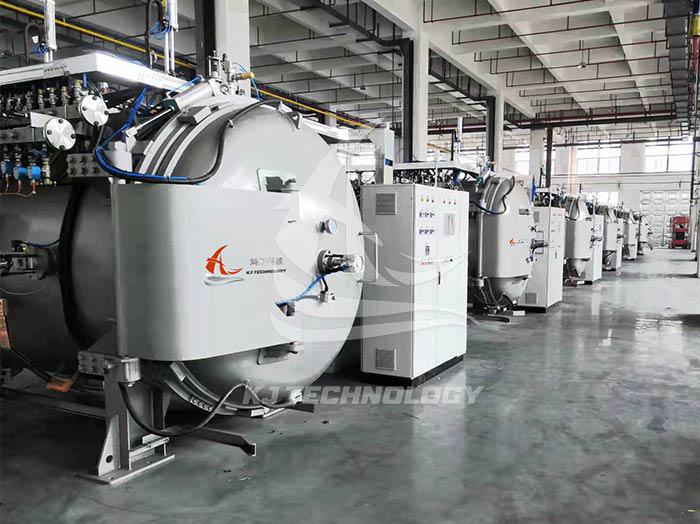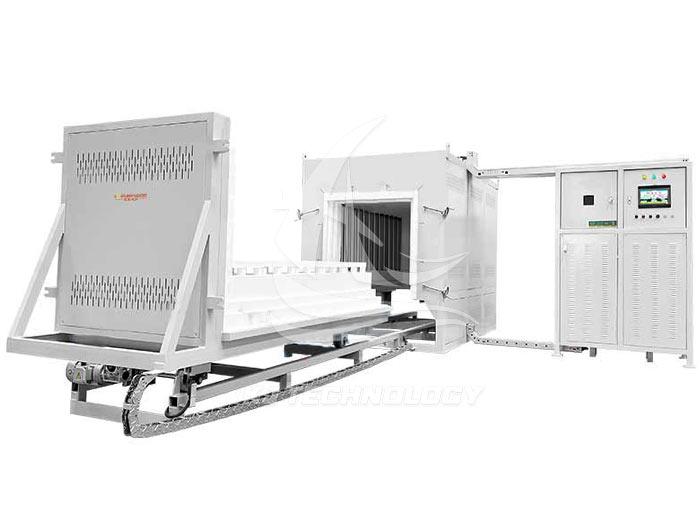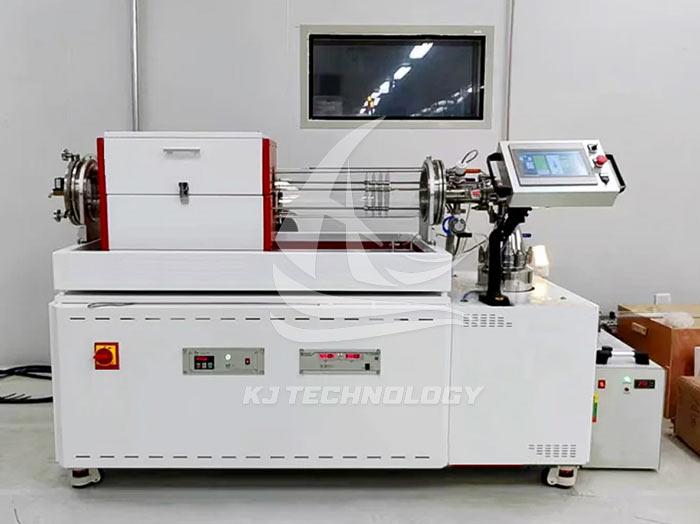What gases can be used in aluminum brazing vacuum furnace?
 07-03-2025 Author: KJ technology
07-03-2025 Author: KJ technology
During the operation of aluminum brazing vacuum furnace, high-purity nitrogen, argon and other gases can be introduced. The specific functions and scenarios are as follows:
1. High purity nitrogen: the core gas for cooling and protection
Cooling stage application
After brazing, the aluminum brazing vacuum furnace needs to be filled with high-purity nitrogen gas (purity ≥ 99.999%) for forced cooling. Nitrogen is circulated through a high-pressure nozzle to quickly remove heat from the workpiece and shorten the cooling cycle. For example, a certain model of vacuum furnace adopts an external circulation cooling system, which shortens the cooling time by more than 30% through nitrogen circulation, while avoiding workpiece deformation or corrosion that may be caused by water cooling.
Protecting the atmosphere
Preventing oxidation: Nitrogen, as an inert gas, can isolate oxygen in the air and prevent workpieces from oxidizing at high temperatures. For example, in the brazing of automotive air conditioning evaporators, nitrogen protection ensures that the joint strength reaches over 85% of the base material, which is much higher than the 60% of air furnace brazing.
Alternative flux: In a vacuum environment, nitrogen can assist in removing trace oxides from the surface of the workpiece, reducing the use of flux. For example, after a certain enterprise switched to nitrogen protection, the consumption of flux decreased by 40%, while reducing the cleaning process and lowering production costs.
pressure control
During the inflation process, it is necessary to strictly control the nitrogen pressure to prevent oxidation or deformation of the workpiece. For example, a certain vacuum furnace is equipped with automatic air supply and release devices, which automatically release air when the furnace temperature increases and the pressure increases; Automatically replenish air when the furnace temperature decreases, ensuring that the pressure inside the furnace remains stable within the range of 0.1~0.2 MPa.
2. Argon gas: an auxiliary gas for high-precision welding
Special material brazing
For easily oxidizable materials such as titanium alloys and high-temperature alloys, argon gas (purity ≥ 99.99%) can be used as an auxiliary protective gas. For example, in the brazing of aircraft engine turbine blades, argon protection can prevent surface oxidation of the blades and ensure that the strength of the brazed joint meets the design requirements.
Local protection application
When brazing in a local area or complex structure of a vacuum furnace, argon gas can be directed and sprayed through a nozzle to form a local protective atmosphere. For example, a certain model of vacuum furnace is equipped with multiple argon gas nozzles, which can adjust the airflow for different parts of the workpiece to ensure consistent brazing quality.
3. Other gases: supplementary options for specific scenarios
Hydrogen (to be used with caution)
Hydrogen has reducibility and can remove surface oxides of workpieces, but there is a risk of explosion, and the oxygen concentration needs to be strictly controlled (usually ≤ 0.005%). For example, in nickel based high-temperature alloy brazing, hydrogen protection can improve joint fatigue strength, but high-precision oxygen analyzers need to be equipped for real-time monitoring.
Mixed gas (nitrogen+hydrogen)
Some processes use nitrogen hydrogen mixed gas (such as 95% N ₂+5% H ₂) to balance protection and reduction effects. For example, in stainless steel brazing, the mixed gas can reduce the oxygen partial pressure, decrease the formation of oxide film, and hydrogen can reduce the already formed oxide, thereby improving the wettability of the brazing material.








